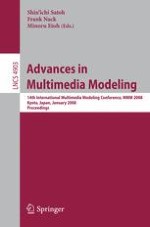Welcometothe14thInternationalMultimediaModelingConference(MMM2008), held January 9–11, 2008 at Kyoto University, Kyoto, Japan. MMM is a leading international conference for researchersand industry practitioners to share their new ideas, original research results and practical development experiences from all multimedia related areas. It was a great honor to have MMM2008, one of the most long-standing m- timedia conferences, at one of the most beautiful and historically important Japanese cities. Kyoto was an ancient capital of Japan, and was and still is at the heartofJapanesecultureandhistory. Kyotoinwintermaydistinctivelyo?er the sober atmosphere of an ink painting. You can enjoy old shrines and temples which are designated as World Heritage Sites. The conference venue was the Clock Tower Centennial Hall in Kyoto University, which is one of the oldest universities in Japan. MMM2008 featured a comprehensive program including three keynote talks, six oral presentation sessions, and two poster and demo sessions. The 133 s- missions included a large number of high-quality papers in multimedia content analysis, multimedia signal processing and communications, and multimedia applications and services. We thank our 137 Technical Program Committee members and reviewers who spent many hours reviewing papers and prov- ing valuable feedback to the authors. Based on the 3 or 4 reviews per paper the Program Chairs decided to accept only 23 as oral papers and 24 as poster papers, where each type of presentation could in addition present the work as a demo. The acceptance rate of 36% follows the MMM tradition of ful?lling fruitful discussions throughout the conference.
